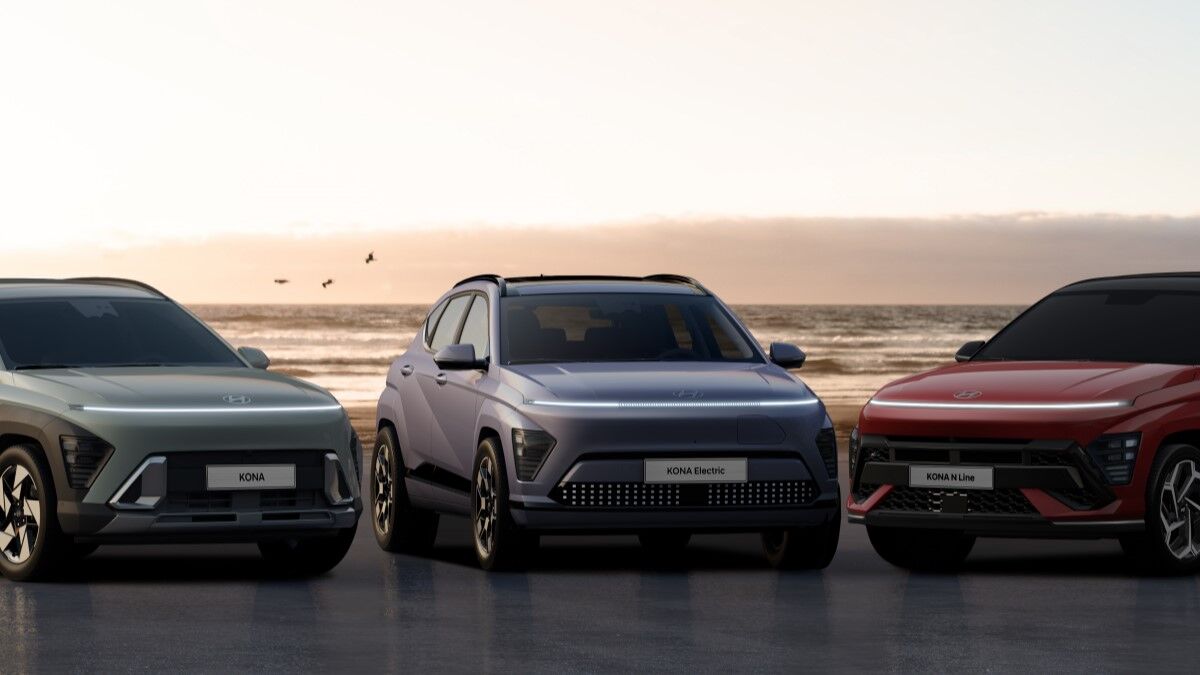
Used Hyundai Kona Quick Facts
- The best years for buying a used Hyundai Kona are 2022 and 2023.
- The Hyundai Kona has one of the longest standard warranties in the business.
- The Hyundai Kona offers a choice of gas or electric propulsion.
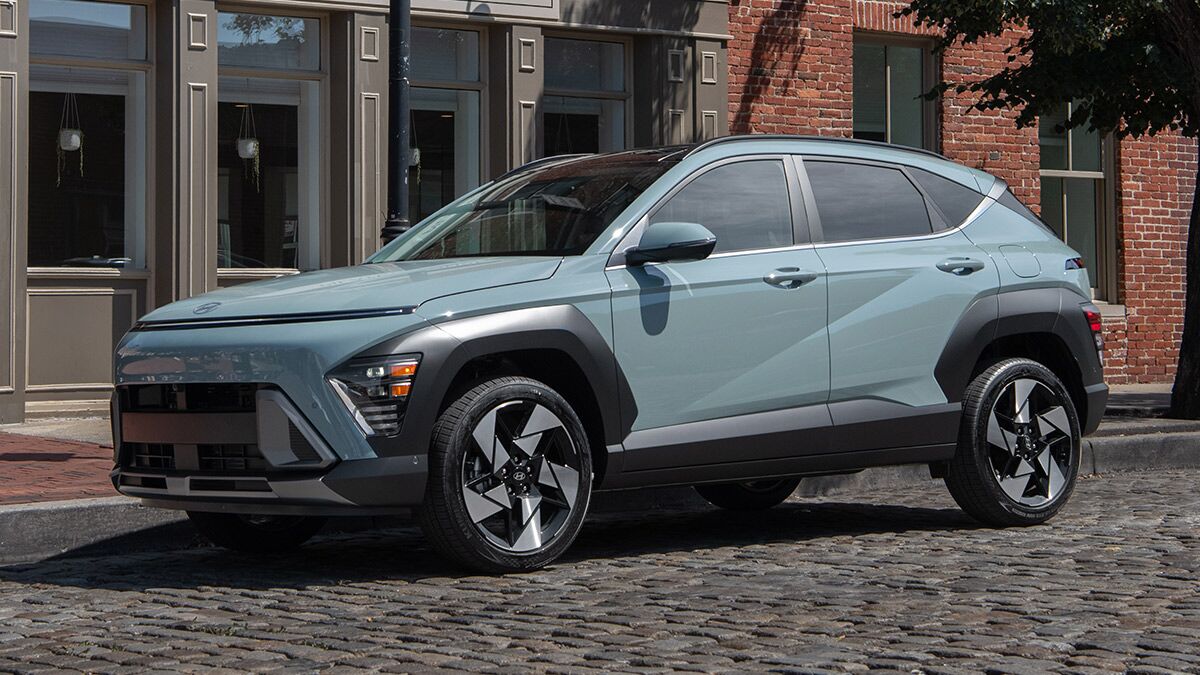
The first-generation used Hyundai Kona is a good choice for anyone needing an SUV’s utility and all-wheel-drive (AWD) capability, but not a hefty price tag and a thirsty engine. The subcompact Kona isn’t big on rear legroom, but its cargo bay is quite accommodating with the seat folded. The first-generation Kona is smaller than the second, but as the second generation just debuted in 2024, most Hyundai Kona SUVs in the used market are likely to be first-generation models. Buyers can choose from several gas engines or go green with the Kona EV.
- What Is the Best Model-Year Used Hyundai Kona?
- Hyundai Kona by Generation: Which Should You Buy?
- Is the Hyundai Kona a Good SUV?
- Does the Hyundai Kona Have a Hybrid or an EV Option?
- How Much Can the Hyundai Kona Tow?
- What Are the Most Reliable Years for the Hyundai Kona?
- What Are the Worst Years for the Hyundai Kona?
- Does Hyundai’s 10-Year/100,000-Mile Warranty Carry Over When Buying Used?
What Is the Best Model-Year Used Hyundai Kona?
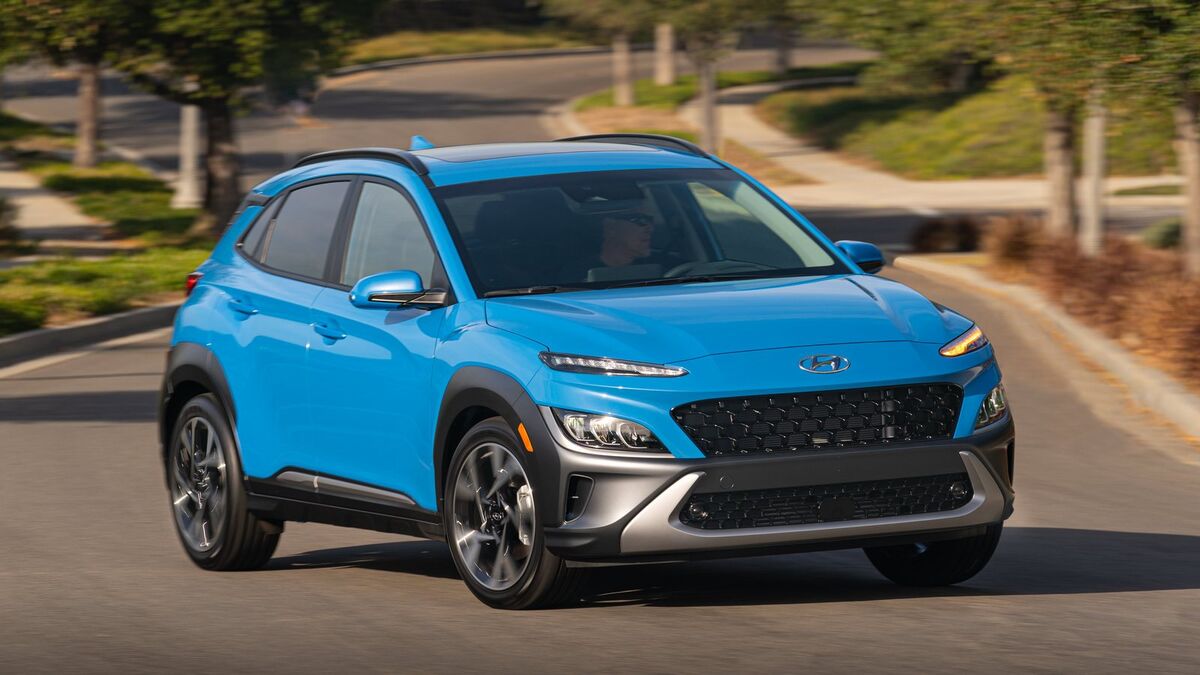
For the choice of engines, features, price, and improved reliability scores, the 2022 and 2023 Hyundai Kona are the best years to buy used. If you’re looking at the Kona EV, a 2021 or newer model is best.
See Hyundai Kona SUVs near you.
Hyundai Kona by Generation: Which Should You Buy?
Second Generation: 2024-Current
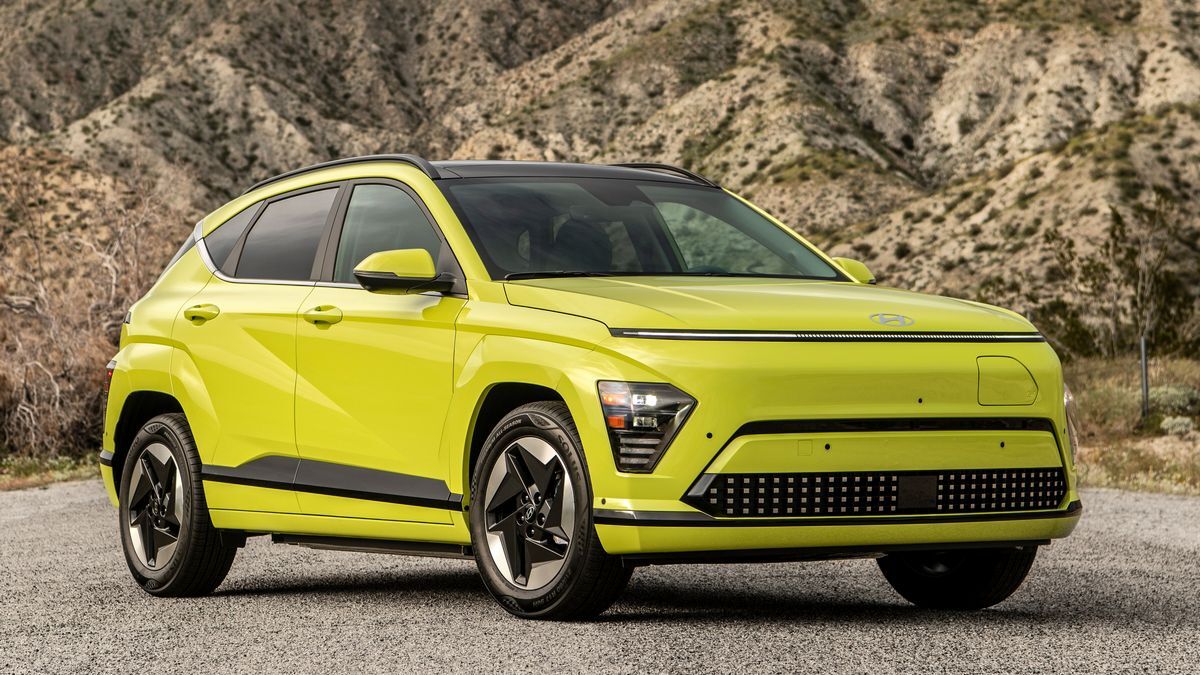
The second-generation Kona debuted in 2024. It’s larger than the original, longer by nearly six inches, with a longer wheelbase, a taller roof, and a wider body. There’s more rear-seat legroom and better tech.
The SE and SEL trims employ a 147-horsepower, 2.0-liter engine mated to a continuously variable automatic transmission (CVT). The Limited and N Line trims have a more powerful setup featuring a 190-hp, 1.6-liter turbocharged engine and an 8-speed automatic transmission.
Hyundai is famous for packing its cars with standard and optional features, and the Kona is no exception. The entry-level SE includes 17-inch alloy wheels, proximity keyless entry and push-button start, air conditioning, and a 12.3-inch touchscreen hosting wireless Apple CarPlay and Android Auto. On the safety front, the SE includes forward collision avoidance and automatic emergency braking, lane-keeping assist, a blind-spot monitor, rear cross-traffic detection, and automatic high beams.
RELATED: Xenon and LED Headlights: What Is the Difference?
Adding all-wheel drive brings an independent rear suspension and additional Snow drive mode.
The SEL adds 18-inch wheels, heated side mirrors, a power driver’s seat, rear privacy glass, dual-zone automatic climate control, and rear-seat air vents. Optional equipment for the SEL includes a 12.3-inch digital instrument cluster, heated front seats, a wireless charging pad, adaptive cruise control, navigation radio (switches to wired Android Auto and Apple CarPlay), junction turning, and Highway Driving Assist 1.
The N Line ups the ante with a more powerful engine, 19-inch wheels, black-out trim, a power sunroof, 8-speaker Bose audio, and metal sport pedals. The Limited adds front and rear parking sensors, a Surround View monitor, a Blind-Spot View Monitor, LED headlights, a power sunroof, the Bose audio system, a hands-free power liftgate, ventilated front seats, a heated steering wheel, and Remote Smart Parking Assist that can pull the Kona out of a tight parking space while you stand outside the vehicle.
On the safety front, the Kona earns a Top Safety Pick Plus accolade from the Insurance Institute for Highway Safety (IIHS).
The second-gen Kona is not without its issues. It has three recalls, including one for a possible engine fire due to a short circuit involving the battery cables and another for a potential loss of power due to a faulty EGR valve. The National Highway Traffic Safety Administration (NHTSA) website has a complete list of Kona recalls and complaints.
See 2024 to current Hyundai Kona SUVs near you.
First Generation: 2018-2023
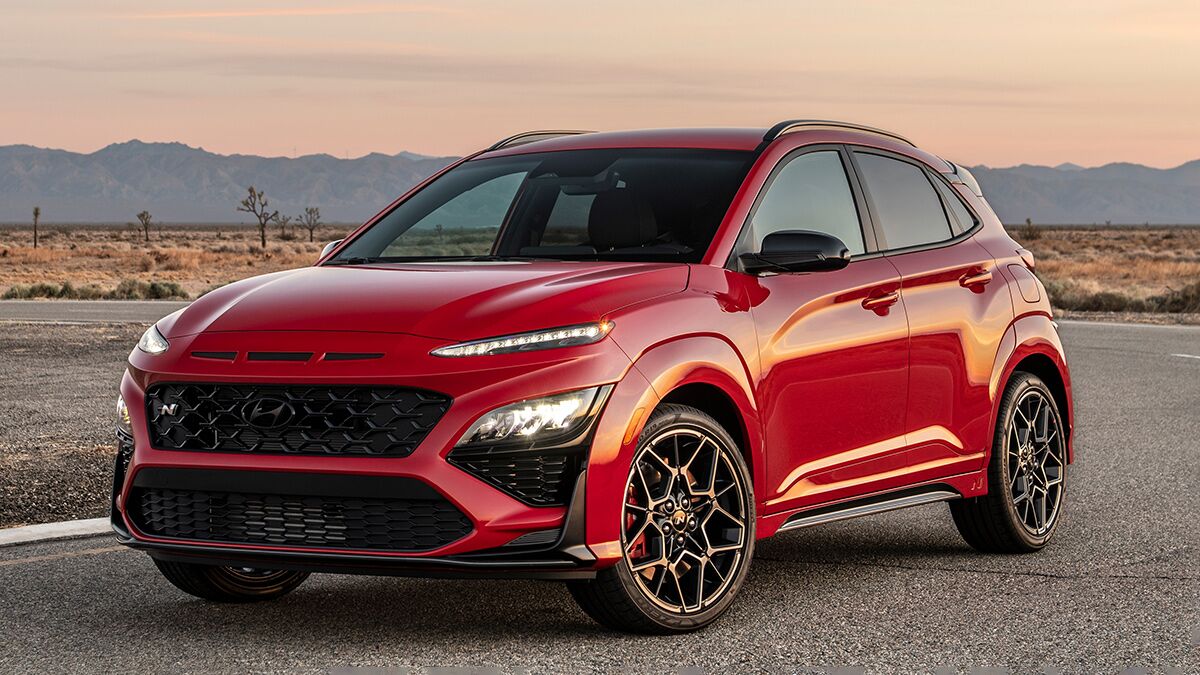
The first-generation Kona received rave reviews out of the box, but the first few years proved problematic, with a number of engine, transmission, and quality issues.
The engine lineup mimics the second generation, but the transmission selection differs. The SE and SEL employ a 147-hp 2.0-liter engine and 6-speed automatic, while the Limited, Ultimate, and N Line have the 175-hp 1.6-liter turbo and 7-speed dual-clutch automatic. Later in the model run, one more engine and trim join the lineup: the hot-rod Kona N, featuring a 276-hp turbocharged engine and an 8-speed dual-clutch automatic transmission. Horsepower and engine options differ over the years, as noted below.
The SE is modestly equipped with the basics, including air conditioning, power windows, cruise control, 16-inch alloy wheels, and a 7-inch touchscreen with Apple CarPlay and Android Auto. Also standard are six airbags, electronic traction and stability control, and Hill Start Assist.
The SEL adds 17-inch alloy wheels, a blind-spot monitor, rear cross-traffic detection, proximity keyless entry and push-button start, heated side mirrors, heated front seats, and rear privacy glass.
Optional for the SEL is the technology package that adds a power sunroof, an 8-way power driver’s seat, fog lights, forward collision avoidance with pedestrian detection, and lane-keeping assist.
The Limited adds a turbocharged 1.6-liter engine, 18-inch alloy wheels, a power sunroof, LED headlights, leather upholstery, a power driver’s seat, and automatic temperature control.
The Ultimate combines the Limited and SEL Tech Package equipment, then adds automatic high beams, rear parking sensors, rain-sensing wipers, a head-up display, a wireless charge pad, an 8-inch touchscreen with navigation, and an 8-speaker Infinity sound system.
The 2019-2021 Kona models have the most complaints and issues, mainly centering around the 2.0-liter engine and the transmission on models with the 1.6-liter turbo. Other complaints focus on glitches with the Bluelink system and touchscreen and braking issues, which prompted one recall from the manufacturer to correct issues with the Integrated Electronic Brake system (IEB).
Be aware that if you buy a used Kona, the 10-year/100,000-mile powertrain warranty reverts to five years/60,000 miles. However, if you buy a certified pre-owned (CPO) Kona, the original warranty is reinstated from the date of its first issuance.
Model Year Changes:
2023: Hyundai adds more standard equipment to the SEL while the SE gains standard blind-spot monitoring.
2022: The Kona gets a styling revision and updated interior. The 1.6-liter engine gains 20 hp, the 276-hp N performance trim debuts, and new options include adaptive cruise control, Highway Driving Assist, a Harman Kardon audio system, and a 10.25-inch touchscreen.
2021: A new Night Edition trim joins the lineup.
2020: An SEL Plus trim arrives, the Ultimate gains adaptive cruise control, and wireless phone charging is offered on more trims.
2019: The SmartSense driver assist suite is newly standard. It includes automatic emergency braking, lane-keeping, and a driver attention monitor. The Kona EV debuts as a California-only model.
Is the Hyundai Kona a Good SUV?
Overall, the Kona is a good choice as a used vehicle. The Kona offers more features, like a head-up display and premium audio, which are not found in most competitors. It will likely cost less, too. We’d be cautious buying a 2018-2021 model. To be safe, you may want to check the vehicle history report or ask a dealer to check the vehicle identification number (VIN), which may give you insight into past repairs or recall work. Another way to get peace of mind is by purchasing through Hyundai’s CPO program, which reinstates the vehicle’s original 10-year/100,000-mile powertrain warranty.
Does the Hyundai Kona Have a Hybrid or an EV Option?
While the Kona doesn’t offer a hybrid, it does have an electric option. The first- and second-generation Kona EV deliver a respectable range, but more so for the second-gen with the larger battery pack.
See used Hyundai Kona EVs near you.
How Much Can the Hyundai Kona Tow?
Hyundai does not recommend towing with your Kona. FYI, there’s some bad information running around the internet. If you search the Kona’s tow rating and get a reply of 5,000 pounds, ignore it. The same goes for any dealer website that tells you differently. If you need to tow, we suggest moving up a notch and shopping for a used Hyundai Tucson or Santa Fe.
RELATED: Payload vs. Towing Capacity: Why It’s Important to Know the Difference
What Are the Most Reliable Years for the Hyundai Kona?
The 2022 and 2023 are the best choices for a first-generation Kona. They have fewer mechanical issues and more features.
What Are the Worst Years for the Hyundai Kona?
The Kona years we’d be cautious about are the 2018 through 2021 models. Some may have an issue with the 2.0-liter engine’s piston rings failing and complaints about abrupt shifting on the 1.6-liter engine’s 7-speed transmission. The 2019 and 2020 Kona EVs from these years also have some red flags, including a recall to replace the battery packs. Other EV complaints include issues with range and charging, some electrical gremlins, and the lack of a spare tire.
Does the 10-Year/100,000-Mile Warranty Carry Over When Buying Used?
Although a used Hyundai Kona powertrain warranty changes from 10 years/100,000 miles to five years/60,000 miles, that’s still a lot of coverage. However, if you buy a certified pre-owned (CPO) Kona, Hyundai reinstates the original warranty from when the vehicle first entered service.
See certified pre-owned Kona SUVs near you.
RELATED: Best Hyundai Tucson Years to Buy Used and Best Hyundai Ioniq 5 Years to Buy Used











You should note that the 1st Generation models all look identical to the model years that were extremely susceptible to theft via the ‘USB stick hack’, therefore will be targeted for theft more often (twice in 3 months for me).